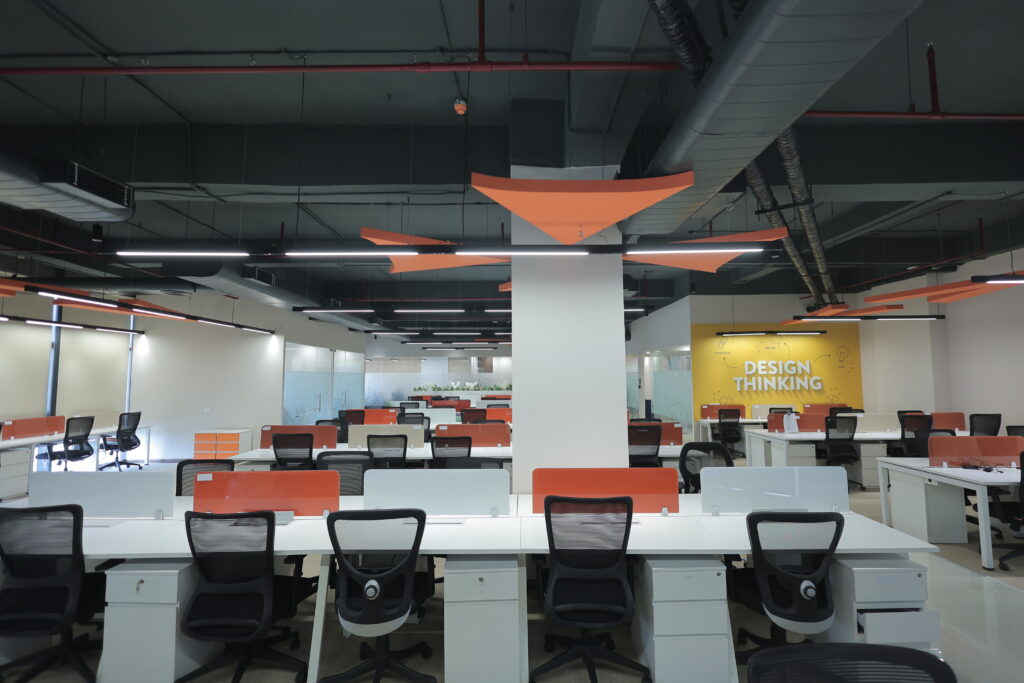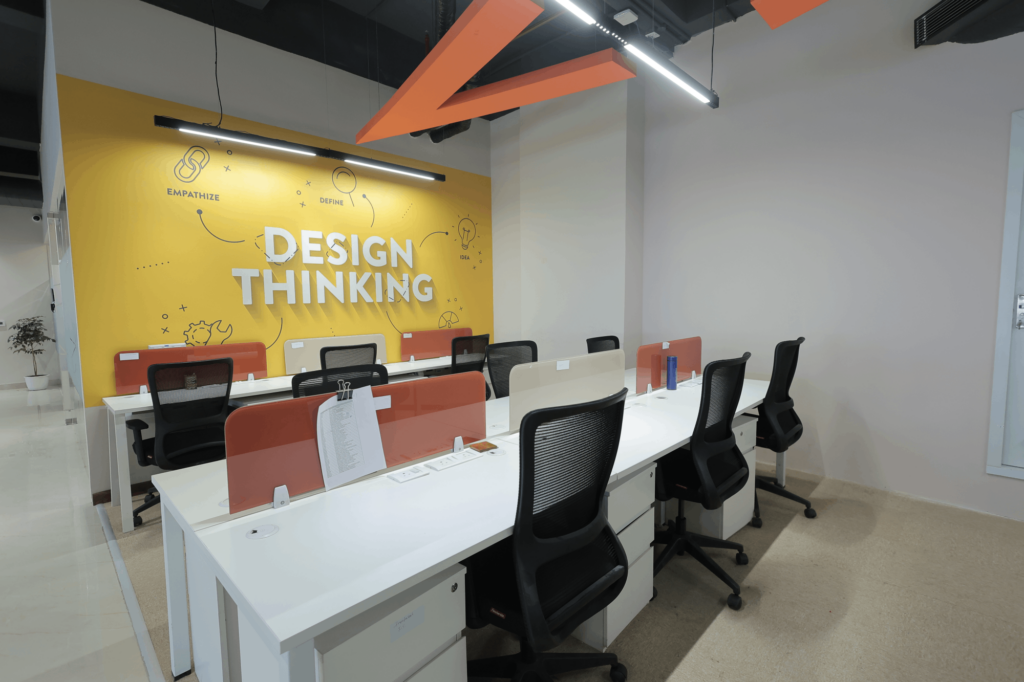
In today’s fast-paced corporate world, collaborative office spaces are revolutionizing the way we work. These spaces are designed to enhance communication, creativity, and efficiency. A well-structured collaborative workspace not only fosters teamwork but also improves employee satisfaction and productivity.
Whether you are designing a new workspace or revamping an existing one, working with an office interior designer in Gurgaon can help you achieve a perfect blend of functionality and aesthetics. Here, we present the best collaborative office space design ideas that will help you create an innovative and engaging environment.
1. Open Floor Plans for Seamless Interaction
An open floor plan eliminates physical barriers, encouraging free-flowing communication among employees. Removing cubicles and excessive partitions allows for an interconnected space where ideas can be exchanged effortlessly. Minimal partitions help maintain openness while still providing privacy where needed. Flexible seating arrangements adapt to different team dynamics, ensuring that employees can move around and collaborate easily. Shared workstations further promote interaction and idea-sharing among teams.
2. Incorporate Breakout Zones for Casual Brainstorming
Breakout zones serve as informal meeting areas where employees can step away from their desks to collaborate in a more relaxed setting. Comfortable seating options like couches, bean bags, and lounge chairs provide a casual environment for discussions. Whiteboards and sticky notes in these areas allow for spontaneous idea generation. Soundproof pods also provide teams with quiet spaces for in-depth discussions without external distractions.
3. Multi-Purpose Workstations for Flexibility
A versatile workspace enables employees to choose where and how they work based on the task at hand. Hot desking allows employees to pick a different desk daily, reducing unused space and increasing efficiency. Standing desks encourage movement and help reduce sedentary behavior, contributing to better health and productivity. Adjustable furniture supports different work styles, ensuring comfort and functionality for all employees.
4. Smart Technology Integration for Seamless Collaboration
Modern collaborative workspaces rely on technology to streamline teamwork. Interactive digital whiteboards facilitate real-time collaboration, making meetings more efficient and engaging. Wireless charging stations ensure that devices remain powered throughout the day, eliminating disruptions. Cloud-based collaboration tools like Slack, Trello, and Google Workspace help employees work together seamlessly, whether they are on-site or remote.
5. Natural Lighting and Biophilic Design for a Healthier Environment
A well-lit office with natural elements creates a refreshing and inspiring workplace. Biophilic design integrates nature into the office by incorporating large windows and skylights to maximize natural light. Indoor plants and vertical gardens enhance air quality and add a touch of greenery to the space. Using natural materials like wooden furniture and stone accents creates a warm and organic feel, making the office more inviting and comfortable.
6. Dedicated Quiet Zones for Focused Work
While collaboration is essential, there are times when employees need a distraction-free environment. Soundproof booths provide a secluded space for deep work and private calls. Library-style areas with minimal noise allow employees to focus on tasks that require high levels of concentration. Noise-canceling panels reduce ambient distractions, ensuring a quieter and more productive workspace.

7. Ergonomic Office Furniture for Comfort and Efficiency
Employees spend hours at their desks, so ergonomic furniture is crucial for health and productivity. Adjustable chairs with lumbar support help prevent back pain and improve posture. Sit-stand desks promote movement throughout the day, reducing the risks associated with prolonged sitting. Monitor stands maintain an optimal viewing angle, reducing eye strain and ensuring better ergonomics for employees.
8. Creative Use of Colors and Branding for Motivation
The office ambiance significantly impacts employee mood and creativity. Using bright and vibrant colors adds energy and liveliness to the workspace. Calming hues like blues and greens are ideal for focus-driven areas where concentration is key. Wall art and company values displayed prominently throughout the office reinforce corporate identity and inspire employees to align with the organization’s mission and vision.
9. Collaboration Hubs for Team Discussions
Dedicated collaboration hubs provide an ideal setting for structured teamwork. Large communal tables make group meetings more interactive and inclusive. Interactive screens facilitate presentations and remote collaborations, making discussions more engaging and effective. Acoustic design elements help minimize echo and background noise, ensuring clarity in conversations and brainstorming sessions.
10. Cafeteria and Lounge Spaces for Social Engagement
A well-designed cafeteria or lounge area fosters informal conversations and team bonding. Communal dining tables encourage employees to connect and build relationships beyond work-related discussions. Coffee stations and snack bars provide quick refreshment breaks, helping employees recharge and maintain productivity. Relaxation zones with comfortable seating offer stress relief and contribute to a healthier work environment.
Final Thoughts
A thoughtfully designed collaborative office space promotes creativity, teamwork, and overall employee satisfaction. By integrating open floor plans, smart technology, ergonomic furniture, and flexible workstations, businesses can cultivate an environment where employees thrive.
